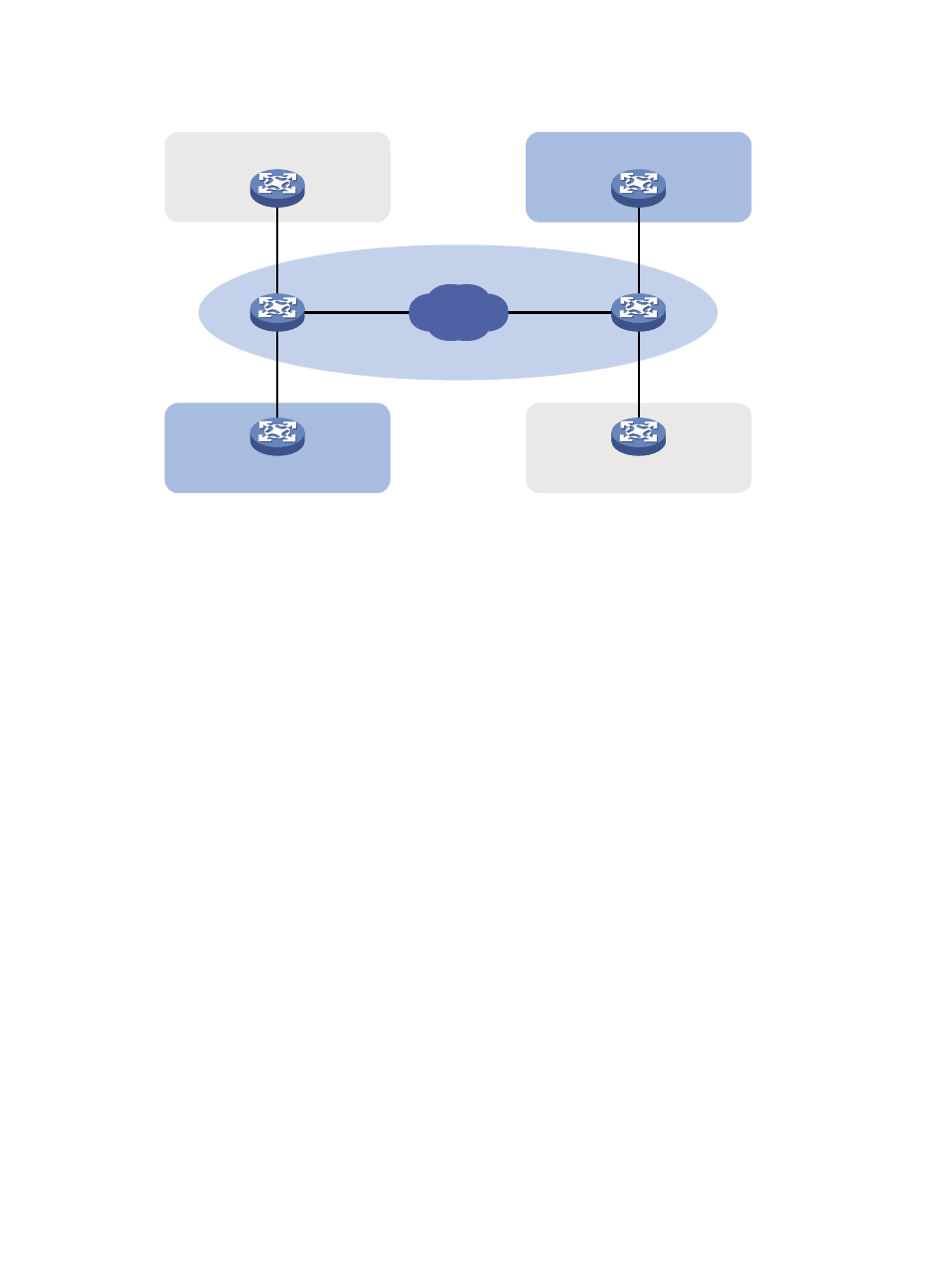Qinq frame structure – H3C Technologies H3C WX3000E Series Wireless Switches User Manual
Page 122

112
Figure 29 Typical QinQ application scenario
As shown in
, customer network A has CVLANs 1 through 10, and customer network B has
CVLANs 1 through 20. The service provider assigns SVLAN 3 for customer network A, and assigns
SVLAN 4 for customer network B.
When a tagged Ethernet frame from customer network A arrives at a provider edge device (PE), the PE
tags the frame with outer VLAN 3. When a tagged Ethernet frame from customer network B arrives at a
PE, the PE tags the frame with outer VLAN 4. There is no overlap of VLAN IDs among customers, and
traffic from different customers can be identified separately.
The double-tagged Ethernet frame is then transmitted over the service provider network and arrives at the
other PE. The PE removes the SVLAN tag of the frame before sending it to the target customer edge device
(CE).
QinQ frame structure
A QinQ frame is transmitted double-tagged over the service provider network. As shown in
,
the inner VLAN tag is the CVLAN tag, and the outer one is the SVLAN tag that the service provider has
allocated to the customer.
QinQ uses CVLAN tags to transmit frames over the private network, and uses SVLAN tags to transmit
frames over the public network. When a QinQ frame is transmitted over the public network, its CVLAN
tag is transmitted as the payload.
CE 1
Customer
network A
PE 1
Public network
PE 2
CE 2
VLANs 1 to 10
VLANs 1 to 20
CE 3
VLANs 1 to 20
VLANs 1 to 10
CE 4
Customer
network A
Customer
network B
Customer
network B
IP network
VLAN 4
VLAN 4
VLAN 3
VLAN 3
- H3C WX5500E Series Access Controllers H3C WX3500E Series Access Controllers H3C WX2500E Series Access Controllers H3C WX6000 Series Access Controllers H3C WX5000 Series Access Controllers H3C LSWM1WCM10 Access Controller Module H3C LSUM3WCMD0 Access Controller Module H3C LSUM1WCME0 Access Controller Module H3C LSWM1WCM20 Access Controller Module H3C LSQM1WCMB0 Access Controller Module H3C LSRM1WCM2A1 Access Controller Module H3C LSBM1WCM2A0 Access Controller Module H3C WA3600 Series Access Points H3C WA2600 Series WLAN Access Points
